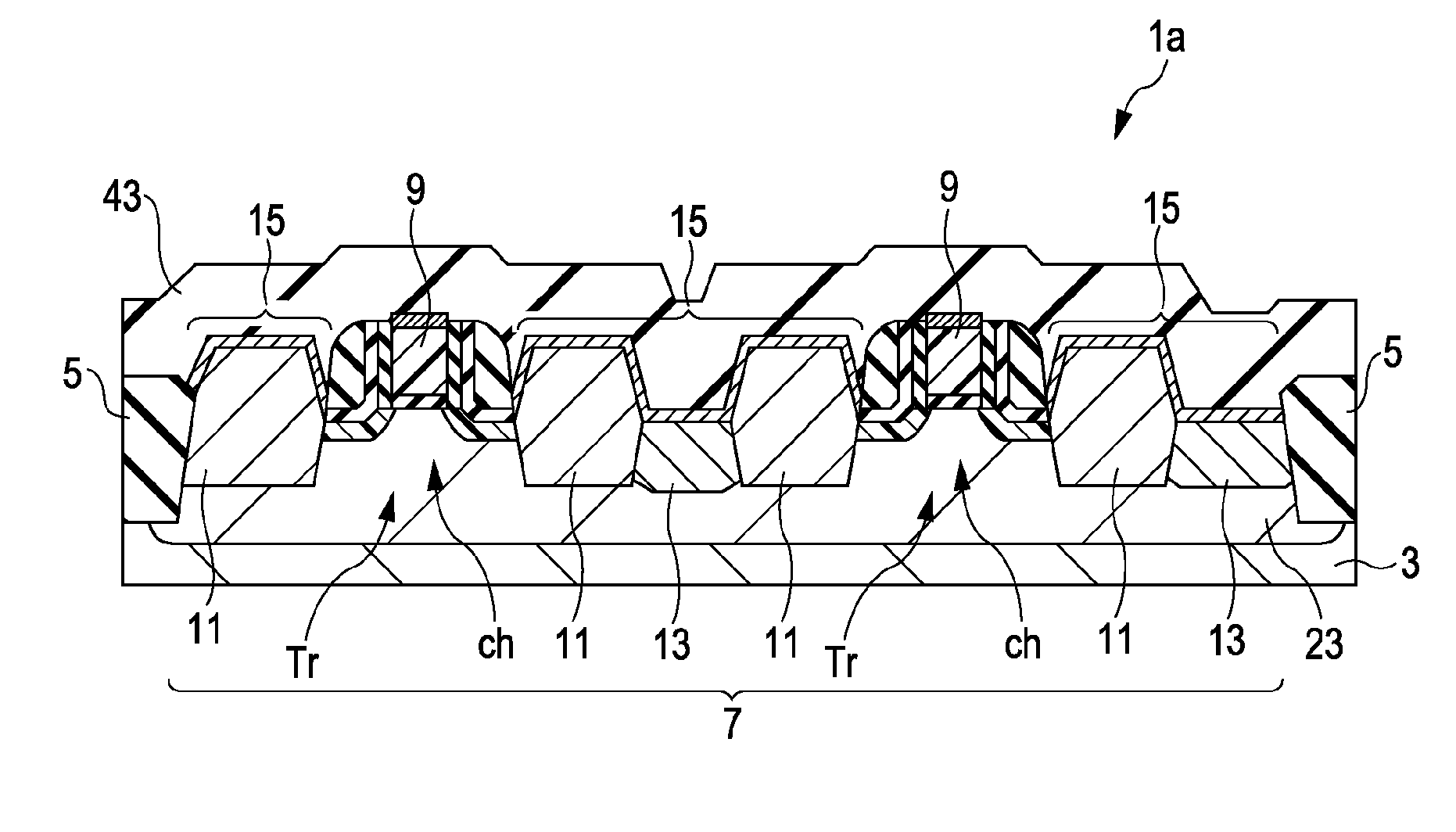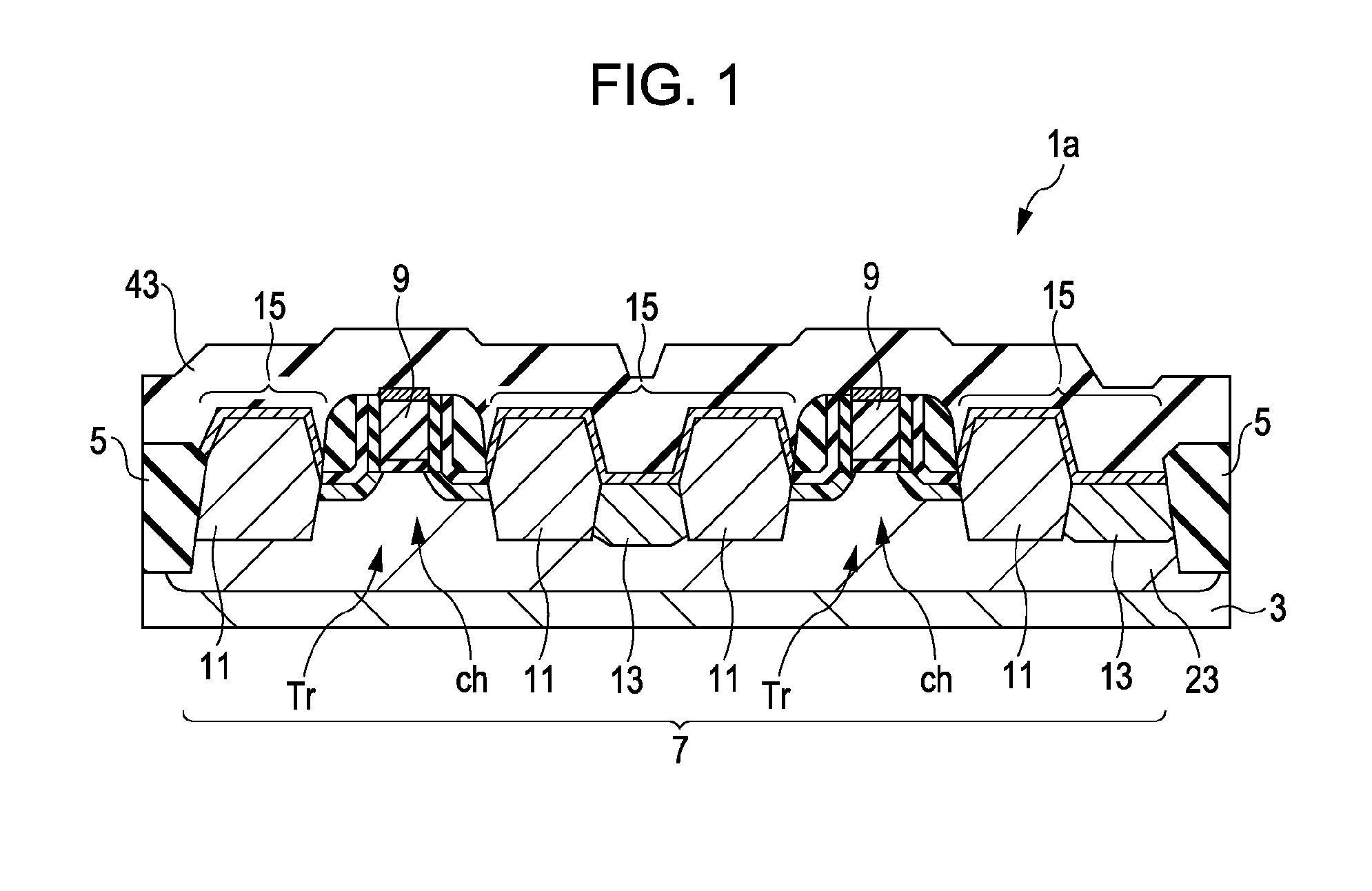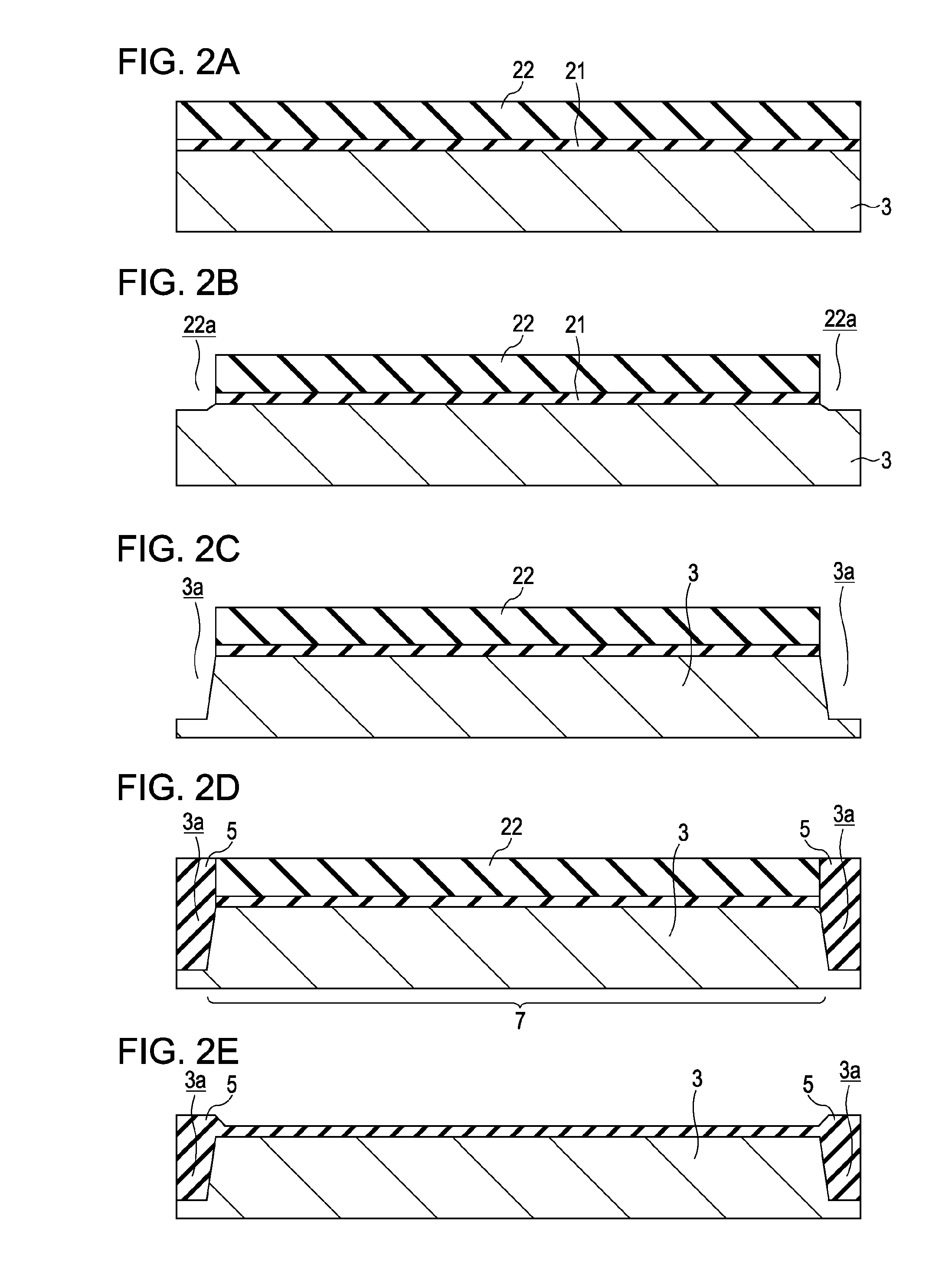Semiconductor device and method for manufacturing semiconductor device
a semiconductor and semiconductor technology, applied in the direction of semiconductor devices, electrical devices, transistors, etc., can solve the problems of increasing junction leakage, achieve the effect of reducing junction leakage, reducing stress variation, and improving semiconductor device characteristics
- Summary
- Abstract
- Description
- Claims
- Application Information
AI Technical Summary
Benefits of technology
Problems solved by technology
Method used
Image
Examples
first embodiment
[0030]FIG. 1 is a schematic cross-sectional view showing a structure of a semiconductor device according to a first embodiment. In a semiconductor device 1a shown in FIG. 1, a surface of a semiconductor substrate 3 composed of silicon (Si) is isolated by isolation films 5, and gate electrodes 9 are disposed so as to extend across an isolated active region 7. At both sides of the gate electrodes 9, the surface of the semiconductor substrate 3 is recessed. Epitaxial layers 11 composed of a semiconductor material having a different lattice constant from that of the semiconductor substrate 3 are disposed in the recessed portions, and impurities are diffused into the epitaxial layers 11. Furthermore, with respect to the gate electrodes 9, diffusion layers 13 are disposed outside the epitaxial layers 11, the diffusion layers 13 being formed by diffusing impurities into a surface layer of the semiconductor substrate 3.
[0031]In the first embodiment, at both sides of the gate electrodes 9, t...
second embodiment
[0098]FIG. 6 is a schematic cross-sectional view showing a structure of a semiconductor device according to a second embodiment of the present invention. A semiconductor device 1b shown in FIG. 6 has the same structure as the semiconductor device 1a shown in FIG. 1 according to the first embodiment except that the depth of diffusion layers 13 constituting source / drain regions 15 is larger than the depth of epitaxial layers 11.
[0099]In the semiconductor device 1b having such a structure, by increasing the depth of the diffusion layers 13 located outside the epitaxial layers 11 with respect to the gate electrodes 9, in addition to the effect of the first embodiment, while reducing the short channel effect, the electric field of the depletion layer at the p-n junction can be reduced, and thus junction leakage can be further improved. Furthermore, by increasing the depth of the diffusion layers 13, the substrate impurity concentration at the junction is decreased. Consequently, the junc...
third embodiment
[0100]FIG. 7 is a schematic cross-sectional view showing a structure of a semiconductor device according to a third embodiment of the present invention. A semiconductor device 1c shown in FIG. 7 has the same structure as the semiconductor device 1a shown in FIG. 1 according to the first embodiment except that the height of the surface of the diffusion layers 13 constituting the source / drain regions 15 is lower than the height of the surface of the semiconductor substrate 3 beneath the gate electrodes 9.
[0101]In the semiconductor device 1c having such a structure, the stress film 43 covering the transistors Tr is extended to the position lower than the channel regions ch. Thereby, in addition to the effect of the first embodiment, the effect of application of stress to the channel regions ch by the stress film 43 can be enhanced.
PUM
 Login to View More
Login to View More Abstract
Description
Claims
Application Information
 Login to View More
Login to View More - R&D
- Intellectual Property
- Life Sciences
- Materials
- Tech Scout
- Unparalleled Data Quality
- Higher Quality Content
- 60% Fewer Hallucinations
Browse by: Latest US Patents, China's latest patents, Technical Efficacy Thesaurus, Application Domain, Technology Topic, Popular Technical Reports.
© 2025 PatSnap. All rights reserved.Legal|Privacy policy|Modern Slavery Act Transparency Statement|Sitemap|About US| Contact US: help@patsnap.com



